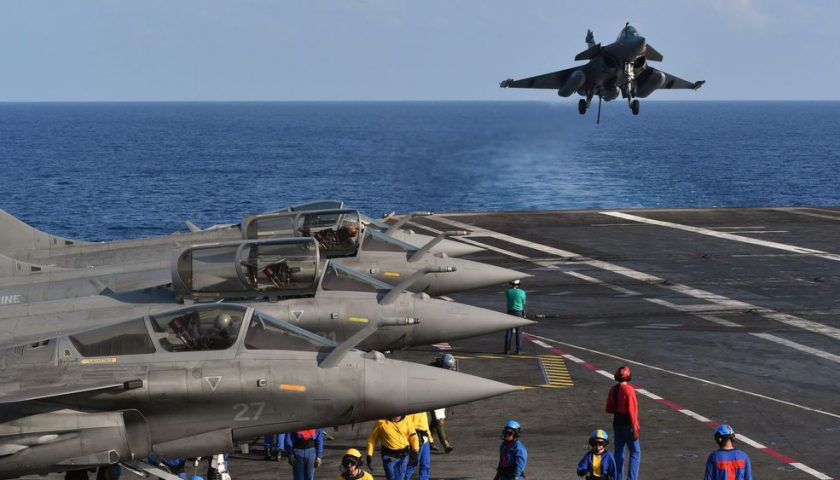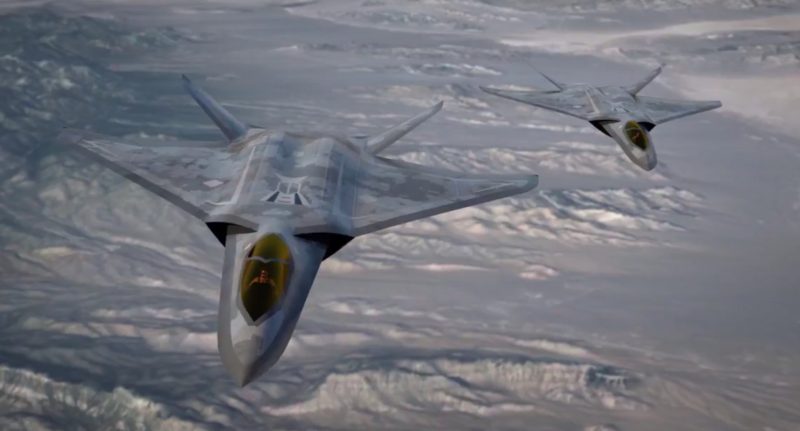In the field of new generation combat aircraft, two programs face each other in the West. On the one hand, the FCAS program for Future Air Combat System, brings together Germany, Spain and France, with the aim of simultaneously developing a new platform, the Next Generation Fighter or NGF intended to replace the Rafale French and the Typhoon German and Spanish, as well as a set of systems evolving the aircraft into a new era of info-centric combat. On the other hand, Next Generation Air Dominance, or NGAD, is the new US Air Force program which is initially intended to replace the F-22 Raptor alongside the F-35A, but whose scope continues to evolve over time. thread of growing tensions between Washington and Beijing, and a certain form of disenchantment of the US Air Force with the Lighting II.
Beyond the operational and tactical differences that mark these two programs, it is interesting to compare their founding paradigms which seem to be based on very different approaches from each other, with notable consequences on the very conception of the evolution of the geostrategic situation. and its schedule, as well as the technological tempo that will mark the upcoming Sino-American competition.
Development period: FCAS 20 years vs NGAD 10 years
The first criterion, and not the least, to attract attention when comparing FCAS and NGAD, is none other than the large gap which separates the durations planned for the development of each of the two programs. Thus, the replacement for the F-22 Raptor must enter service before the end of the current decade, with a development period of less than 10 years, where the FCAS NGF must only enter service from 2035, and in all probability, rather around 2040. Several reasons determine this large difference, from simple to doubling, in terms of development duration. On the European side, the need to replace Rafale et Typhoon will only be significant beyond 2035 according to current planning, while the program itself, already slowed down by the difficulties of supra-national cooperation, is intended to be very ambitious technologically, since it is a question of moving directly from the “4th generation” to the “6th generation” of combat aircraft, if this notion really has any meaning. Furthermore, both the Rafale that Typhoon had been developed over a period of more than 15 years, and European aircraft manufacturers are working to reproduce this plan which had produced very efficient aircraft.

On the American side, the problem is more complex. First, the imminence of a possible confrontation between US and Chinese forces around Taiwan forces the US Air Force to acquire devices with a large range of action, which is neither the case. of the F22, nor of the F35A, and this as quickly as possible. This need has also led to the acquisition of F-15EX, an interim solution intended to overcome the shortcomings of the two current American flagship fighters in this area. Second, this same US Air Force faces fiscal wall today for F-35 program, whose maintenance is so high that it would be necessary, within ten years, either to drastically reduce the number of aircraft in service, or to reduce the number of annual flight hours by devices, to fit within the planned budgetary framework. It is therefore essential for it to quickly find viable alternatives capable of responding to both to the operational problem of the Western Pacific, and the budgetary problem posed by the F35.
To achieve this, it relied on completely new industrial and operational paradigms to design and implement its future combat aircraft, making extensive use of digital modeling and testing, and the Agile design method widely used in the 'Digital engineering, as well as the use of open systems, these 3 criteria forming what it now calls e-Program, as can be the eT-7A or the F15EX. Beyond this technological approach, it is also committed to a radically new conception of the very nature of devices, taking great distances with the concepts of versatility, large series, and even scalability, to design more devices. specialized, over much shorter deadlines, making use of technologies for the most part already existing and made reliable by the demonstrator programs, in order to obtain aircraft that are much faster to develop and bring their operational benefits over a relatively short period of time. limited from 12 to 15 years before being replaced. This is the concept of e-Serie.
Aircraft lifespan: NGF 40 years vs NGAD 15 years
There are 75% of this article left to read, Subscribe to access it!
The Classic subscriptions provide access to
articles in their full version, and without advertising.
Meta-Defense celebrates its 5th anniversary!

- 20% on your Classic or Premium subscription, with the code Metanniv24
Offer valid from May 10 to 20 for the online subscription of a new Classic or Premium, annual or weekly subscription on the Meta-Defense website.


